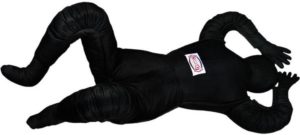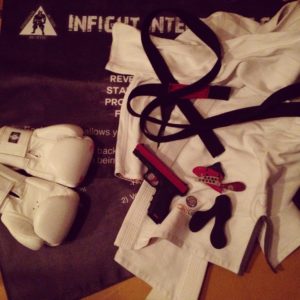I get a good number of emails and PMs asking me advice on solo training, especially for grappling. One of the recurring themes is if a grappling dummy is a good piece of gear?
For those who are unfamiliar with them, a grappling dummy is sort of like a heavy bag with limbs. There are different ones, but they tend to look like this:

While I hate to try to stop people from doing training, my attitude is that putting time into a grappling dummy is that the juice that is not worth the squeeze.
Here is the problem – to get a good one that is rugged enough and is shaped in a way to be useful, you have to spend a boat load, generally around $500 or so. But you are only getting a tiny fraction of performance out of it that you can’t get solo. Most of what is unable to do solo needs to be done against a resisting opponent with aliveness and ambiguity, and the dummy gives you no help at all in that regard. For example, the hard part of doing a duckunder (a hugely important move to defeat the other person’s arms and to set up takedowns, clinch control, or to take the back) is
1) The proper mechanics of a level change and keeping your heard vertical
2) Seeing or setting up the opening to do the move and
3) Finishing while the other guy reacts.
So to make sure you have the move down, the first part can be done shadow boxing, and the other two parts need a moving opponent. That’s not to say you can’t do the shadow boxing (or shadow wrestling in this case) on the dummy, but it is not needed and you have spent $500 to boot. Working armdrags (or something similar like a 2on1) on a dummy is fractionally better and more useful because to do a drag you have to actually grasp an arm, but again, is that worth the money?
I do think there is one specific time a dummy is worthwhile. If you truly live in an area where you are more than an hour travel from a BJJ/Judo/Sambo/Wrestling gym, AND you have had some hands on training (as in a short course like ECQC, Paul’s MDOC, my courses, or similar), then having a dummy will be the best you can do as far as an opponent for the bulk of your practice. Then it is a good investment. It is a bad investment IMO if you have not had the hands on coaching. Trying to learn any kind of entangled fighting through DVDs or YouTube is useless, so again no need to spend the cash on a dummy.
If you have one, or can get one inexpensively, then by all means use it. But don’t drop lots of cash on something that won’t fully return the investment.


